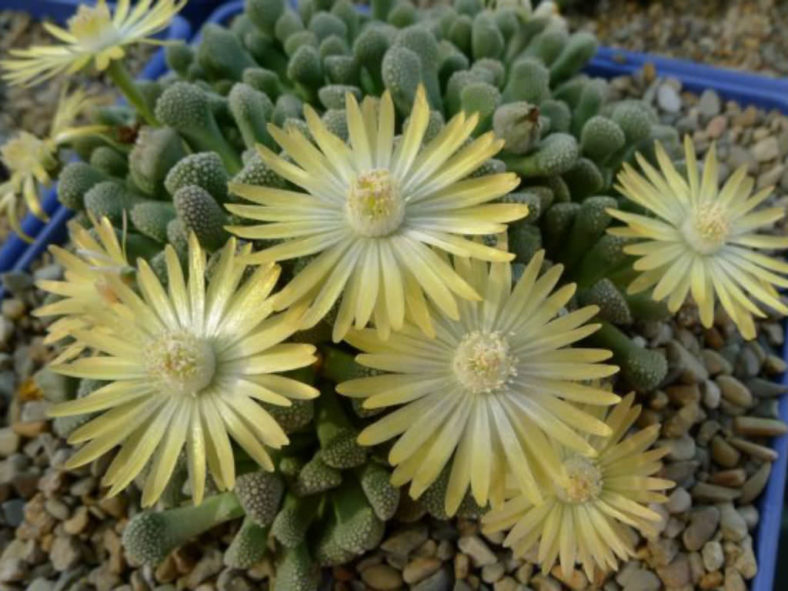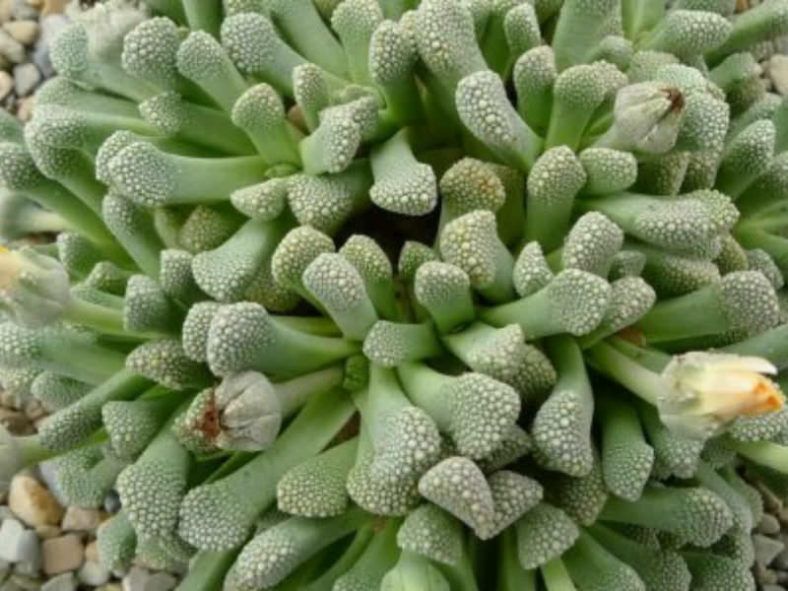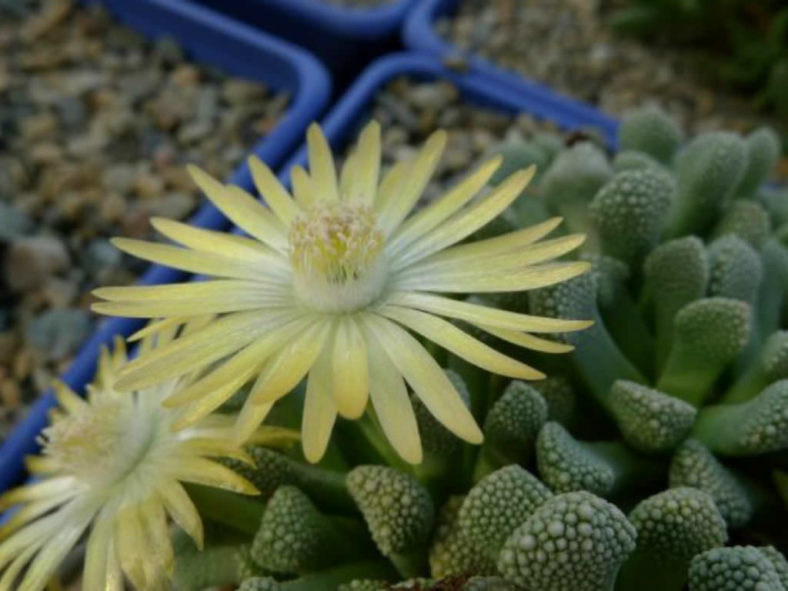Scientific Name
Titanopsis primosii L.Bol. ex S.A.Hammer
Accepted Scientific Name
Titanopsis schwantesii (Dinter ex Schwantes) Schwantes
Scientific Classification
Family: Aizoaceae
Subfamily: Ruschioideae
Genus: Titanopsis
Origin
Titanopsis primosii is not recognized as a separate species and is treated as a synonym of the variable Titanopsis schwantesii.
Description
Titanopsis primosii is a mat-forming succulent with rosettes of gray-green spoon-shaped leaves with a rounded apex covered with flat, chunky white or grey warts. The rosettes can reach up to 2 inches (5 cm) in diameter, while the eaves can grow up to 1.2 inches (3 cm) long and 0.3 inches (0.8 cm) wide.
The flowers are bright yellow, occasionally orangish or pinkish, and appear in late spring, opening in the afternoon and reaching up to 0.8 inches (2 cm) in diameter.

Hardiness
USDA hardiness zones 9b to 11b: from 25 °F (−3.9 °C) to 50 °F (+10 °C).
How to Grow and Care
Like many South African desert plants, Concrete Leaf Living Stone tends to become dormant or semi-dormant during the height of summer to conserve moisture. Therefore, it is often a mistake to keep the plants wet during mid-summer, although they require some water during this period.
Titanopsis are all pretty similar plants and seem to make most of their growth in the fall, with another shorter burst in the spring. Flowers may be produced in fall, spring, or both. This charming little plant is worthy of a place in most collections. Concrete Leaf Living Stone is quite tolerant of temperatures down to 40 °F (5 °C) if kept relatively dry. Like most plants, it will benefit from good ventilation.
Concrete Leaf Living Stone should always be kept in a bright, sunny situation. It will grow well in a south-facing window.
Water this succulent well during the spring, allowing the compost to dry between waterings. During the summer, the semi-dormant Concrete Leaf Living Stone should be watered sparingly to avoid any chance of rotting.
Learn more at How to Grow and Care for Titanopsis.
Links
- Back to genus Titanopsis
- Succupedia: Browse succulents by Scientific Name, Common Name, Genus, Family, USDA Hardiness Zone, Origin, or cacti by Genus
Photo Gallery
Click on a photo to see a larger version.

